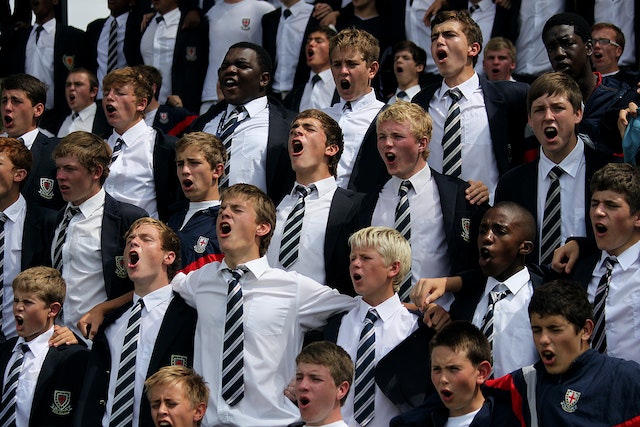
Why are UK public schools actually private schools? They were not attached to a church and were open to the fee-paying public. They are technically not for profit charities.
In most countries, public schools are run by the government and private schools are run by private institutions. In the UK, public schools are a different type of private school.
In the majority of countries, there are two types of school: those run by the state and those not run by the state. If we take the USA as an example, there are 90,148 public schools across the country. These range from elementary schools to high schools. There are 13,894 private schools that also range from elementary to high school. 78% of schools are public.
There are several differences between the two. Public schools are government funded and are therefore free for the students. Private schools charge a fee which depends on the school. The average annual tuition for a private school in the USA is $12,167. Public schools have to use a curriculum that is decided by their state’s board of education and they have very little say in the content of that curriculum. Private schools receive no government funding and can thus set their own curriculum. Successful private schools will have more money for equipment and to pay staff, while public schools are controlled by their state’s, or the national budget. Private schools can attract better teachers because they can offer higher salaries. That isn’t always true because some people teach for the love of teaching, but it is generally true.
So, what about in the UK? The UK has private schools, public schools, and state schools. State schools are the same as public schools in the USA. They are run by the government, funded with tax money, and they have all of the same advantages and disadvantages that public schools in other countries have. Private schools are the same as private schools in the USA. They charge fees and they have all the same advantages and disadvantages of American private schools.
So, what are UK public schools? The reason goes back to the origins of schools and education in the UK. In the early days of England, after the Romans had left, education was conducted in the Roman method, with an orator talking to listeners. Most of the people were peasant farmers and had no time or need to learn. There were very few books available and they were expensive. The first real school in England opened in 598, by Augustine, the first Bishop of Canterbury. It was connected to the church in Canterbury and its purpose was to teach religious texts. More schools connected to churches sprang up and they either taught Latin for the church or they taught people how to sing for the church choirs. The schools that taught Latin became known as “grammar schools”.
These grammar schools taught Latin grammar and they were connected to churches. They were not free schools and the students had to pay tuition. The grammar schools were denominational because of the churches they were connected to and they restricted their intake dependent on the pupils’ background, location, and parents’ employment. Some grammar schools were connected to certain industries and they limited their students to the sons of certain guilds or companies. These schools were private because they were run by a private institution and they were for profit organizations.
In 1382, William of Wykeham, the Bishop of Winchester, founded a school called Winchester College. He said that his school was going to be for the scholars that wanted to learn Latin grammar, but who couldn’t afford to go to the grammar schools. He said that the school would take in 70 poor scholars and they would live in a dormitory on campus. His school put no limits on where the students came from or what work their parents did. He also allowed for 10 students from wealthy or noble families so as to give the school a good reputation. Thereby, because the school had no limits on who it admitted, it became a public school.
Other schools rose up to copy the system that William of Wykeham had begun. Eton, one of the most famous public schools, was founded in 1440 by King Henry VI to educate 70 poor boys. Over the years, the number of wealthy and powerful people who sent their children to these schools started to increase and the number of poor people started to decrease. Once the number of wealthy started to increase, it caused a spiral. Increasing wealth brought more status, which in turn attracted more people. Some schools became renowned for the positions in society their alumni achieved and in the 17th century, people started to seek out schools for the potential they could bestow on their students. In the middle of the 16th century, Eton slowly began to charge fees.
Public schools in the UK started as schools that were open to all of the public, especially those who could not afford the grammar schools attached to churches. Public schools took in poor people and were classed as charities for this reason. Over the centuries, they have flipped on their heads and are now known for being schools for the rich and powerful. Yet, they are still classed as charities. And this is what I learned today.
Sources
https://nces.ed.gov/pubs97/97983.pdf
https://www.britishcouncil.hk/en/stateschools_priavteschools
https://www.funtrivia.com/askft/Question94714.html
https://educationdata.org/average-cost-of-private-school
https://en.wikipedia.org/wiki/Public_school_(United_Kingdom)
http://www.educationengland.org.uk/documents/fleming/fleming.html
https://en.wikipedia.org/wiki/History_of_education_in_England
